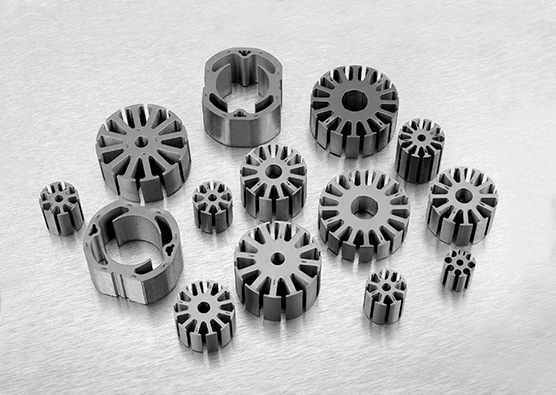 2025.07.18
2025.07.18
 Industry News
Industry News
As the demand for energy-efficient and compact motors continues to grow, the importance of high-precision Motor Core Mold technology in both electric vehicle (EV) and industrial applications has significantly increased. A Motor Core Mold is essential in shaping the laminated cores of electric motors, which directly affects motor performance, efficiency, and durability. With the global shift toward electrification and automation, advancements in Motor Core Mold manufacturing are influencing the future of both transportation and industrial machinery.
One of the notable trends in Motor Core Mold manufacturing is the move toward high-speed precision stamping. Modern Motor Core Molds are now engineered to accommodate stamping speeds that meet the large-scale production needs of EV motors without compromising accuracy. This is particularly important in EV manufacturing, where stator and rotor cores must be produced in high volumes and with minimal variation. As a result, manufacturers are investing in Motor Core Mold designs that are compatible with high-speed presses and automated feeding systems.
Another trend is the use of progressive Motor Core Mold configurations. These molds are capable of performing multiple operations within a single press cycle, such as punching, notching, stacking, and trimming. Progressive Motor Core Mold systems help reduce material handling time, streamline production, and improve alignment precision. This approach is especially advantageous for industrial motors that require complex laminations with consistent stacking for better magnetic performance.
Material optimization has also become a central focus in Motor Core Mold manufacturing. Many modern Motor Core Molds are designed to handle advanced electrical steel grades, such as high-silicon or grain-oriented steel, which offer better magnetic properties but are more difficult to process. Mold manufacturers are enhancing tooling hardness, surface coatings, and mold cooling systems to ensure these materials can be stamped cleanly and efficiently, reducing tool wear and extending mold life.
Customization and modularity are being prioritized as well. Since motor core requirements vary across industries—from compact motors in consumer electronics to large-scale motors in industrial machinery—Motor Core Mold manufacturers are offering more flexible solutions. Custom molds tailored to specific motor designs allow companies to improve performance characteristics while maintaining compatibility with existing production lines. Modular Motor Core Mold systems also enable quicker mold changes and easier maintenance, which is particularly valuable in operations that produce a variety of motor types.

In the EV sector, there is growing interest in interlocked and bonded motor core stacks, which provide improved structural integrity and reduced noise. To accommodate this, Motor Core Mold designs are evolving to include stacking and interlocking functions directly in the stamping process. This eliminates the need for additional assembly steps, shortens production time, and enhances product quality.
Digital integration is another emerging trend. Some Motor Core Mold systems now incorporate sensors and monitoring devices that track tool condition, alignment, and stamping force in real time. These data-driven insights help manufacturers predict maintenance needs and ensure consistent production quality. This trend aligns with the broader shift toward smart manufacturing in both automotive and industrial sectors.
In conclusion, the evolution of Motor Core Mold manufacturing is driven by the needs of high-efficiency motor production, especially in the rapidly expanding EV and industrial markets. Trends such as high-speed precision stamping, progressive die design, material adaptability, modularity, and digital integration are shaping the future of Motor Core Mold technology. As manufacturers continue to prioritize precision, reliability, and production speed, the role of the Motor Core Mold will remain critical in advancing motor innovation across industries.